We practice architecture because we believe it can, and should, make a difference. Our aim is to add value to our clients’ investment in property by seeking creative cost effective solutions that enrich human life, enhance neighbourhoods, protect the environment and are sensitive to cultural context. We work collaboratively with clients and consultants, constantly questioning and refining to ensure that we not only realise but exceed expectations.


DIRECTORS
ASSOCIATES
INTERIORS
COLLABORATORS
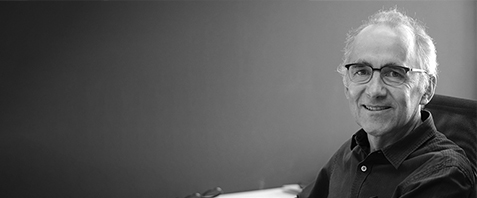


Chris Malan is a senior director at Co-Arc International Architects with over thirty years professional experience.
As a young architect in training Chris accepted a solitary year-long posting to Botshabelo township outside Bloemfontein, an experience which both challenged and informed his understanding of the role of an architect in Africa. Seeking a broader perspective, he embarked on a gap year in Europe from which he returned at the end of 1989, when global political shifts heralded political change at home. He joined Meyer Pienaar Architects in Johannesburg and was appointed an associate in the firm four years later. In this role he immersed himself in developmental challenges of the country, and helped navigate Meyer Pienaar through a period of transition, which culminated in 2005 with the establishment of Co-Arc International, of which he is a founding director.
Chris has made award-winning contributions to architecture and to urban design in the current South African context and has worked as project architect across the African continent. He involves himself actively in all stages of design and on-site realization of projects at all scales, be they small developmental projects, major civic and corporate buildings, or strategic urban design frameworks. He has served on the habitat portfolio of the SA Institute of Architects, assisted academically as thesis examiner, competition adjudicator and guest lecturer, and co-authored and published two architectural monographs.
Chris thrives on the exploration of strategic solutions to complex contextual challenges, seeking to transform existing environments for the better by working with their inherent potential. Much of his work entails the redevelopment of urban precincts, brownfield sites or buildings in need of repurposing for a more sustainable future. Professionally grounded by separate degrees in architecture and in environmental management, he approaches projects with a sense of responsibility towards the shaping and the nurturing of our living environments: our cities as habitats supportive of human welfare within healthy societies, sustainably embedded within the natural ecosystems and resource-base of our planet.
Read more
Patrick McInerney is CEO and lead designer at Co-Arc International. With a background in retail and commercial architecture, a master’s degree in urban design and considerable experience in commercial, cultural, mixed-use and housing projects, Patrick’s passion for architecture is fed by an understanding of its impact on individuals and society.
As a senior partner of Co-Arc International Architects, he has gained more than 40 years’ experience as he collaborated in a leadership capacity on various projects throughout Africa including, Ghana, Morocco, Mauritius, Mozambique, Botswana and South Africa. He has won various awards, and received the South African Institute of Architects’s Merit award for the Edenvale Public Library and Mpumalanga Government Complex. The diversity of projects has afforded him greater understanding of the impact of architecture on different cultures, clients and professional teams.
As an expert in the field, he has served as an external examiner and visiting lecturer at the University of the Free State and the University of the Witwatersrand and, has made numerous contributions to books and magazines. Patrick has co-authored, edited and published two architectural monographs of important post-apartheid buildings in South Africa.
He sees each project as a unique opportunity to find the visionary in each client. To him, the client is key. Patrick is acutely aware of the trust placed in the architect and the responsibility he has toward the client in delivering a sound financial investment. He is motivated by a belief that architecture does in fact have a psychological and physiological impact on the lives of the inhabitants, and he is specifically interested in the way his decisions affect people; how they feel and act. Crucial to him is an appropriate response to community and nature, which adds value to clients and society.
Patrick knows that architecture is a creative pursuit, where insight into the client’s stated and unstated needs can create a profitable investment for the client, and a valuable addition to the city.
Read more
Catharine Atkins has collaborated on various professional teams to build a long list of successful projects in South Africa, Ghana and Nigeria and further afield. This valuable experience gained over the course of her career, with a passionately technical orientation, has led her to oversee a diverse production team tasked with delivering the tallest building in Africa.
The Leonardo tower tested every aspect of her technical and coordinating abilities; and increased her passion for collaboration with a full design team, aimed at delivering a complete and functional design.
Catharine has completed various high-rise offices, hotels,and retail and mixed-use projects in the development hub of Sandton during her time at Co-Arc International. Her expertise in the delivery of complicated projects across the continent of Africa is unrivaled.
Her role as a project leader in the office extends to the role of production leader and mentor in the office. Not only does Catharine manage to co-ordinate the complexity of the structure and systems of the fast-tracked Leonardo tower; she also makes time to develop the technical skills of young architects.
For Catharine, architecture is about “getting the design in my head and understanding the product we will deliver”. To her the building must be a ‘working machine’ that is fully resolved technically and in all aspects, a complete product. Her capacity to visualise the end-product is a key attribute that allows her to bring together the various disciplines of a professional team and lead them to the completion date of every project she undertakes.
Read more
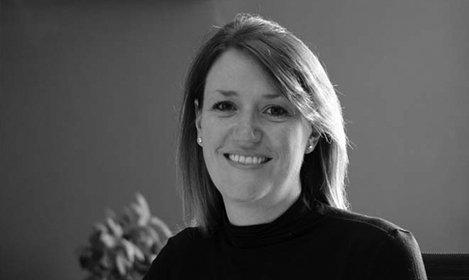
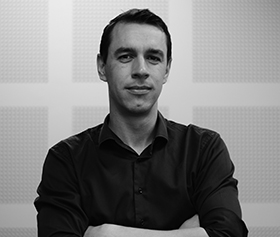
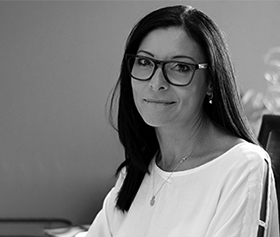
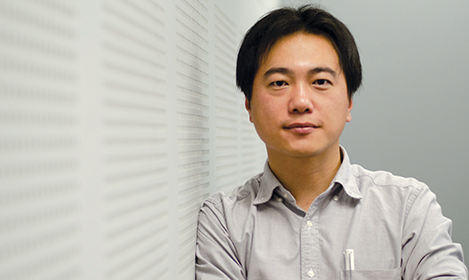
Angela is the head of our interior design department at Co-Arc International Architects. She is skilled at managing the intricacies of various projects. Angela became an associate at Co-Arc International Architects in 2021. She oversees the production and management of all interior design projects as well as collaborates with consultants and clients to produce well-coordinated designs that enhance the clients’ investments.
Read more
Gustav joined Co-Arc in 2017 as a Candidate Architect and got straight into the crux of work by running large scale projects in Botswana, Mpumalanga, Ghana and Johannesburg. He obtained his Bachelor’s Degree in Architecture from the University of Cape Town as well as graduating with a Bachelor’s Degree in Film and Media Productions. He then went on to obtain his Honours and Master’s in Architecture from the University of the Witwatersrand.
Gustav firmly believes in the importance of holistic, context driven designs in cities. He maintains that in order for efficient and working cities to be produced, architecture should focus on the whole in order to provide for the individual. His interest in efficiency of work and design allows him to focus on the important aspects of clients’ requirements and to satisfy their needs in the most professional and effective manner.
Gustav became an associate at Co-Arc International Architects in 2021 and has an abundance of experience in every aspect of the architectural process. He is always consistently learning from fellow colleagues in the office and has grown into a well-rounded architect, who becomes an integral member of any team or project that he works on.
Read more
Read more
Yu-Wei (Andy) Fan applies a rigorous and intellectual approach to the design of a project, and a thorough analysis and interpretation of the client’s needs allows him to arrive at functional and flexible building and spatial designs that enhance the value of the final product.
He became an associate at Co-Arc International Architects in 2019, after gaining experience on a wide range of key projects throughout Africa such as in Kenya, Ghana, Botswana and South Africa. Since joining in 2009, his pragmatic and diligent manner has enabled him to collaborate in an increasingly senior role within Co-Arc, to the point where he is now project coordinator on various large-scale developments.
Andy finds it important to develop concepts into detailed designs and 3D visualisations to assist the client’s understanding of a design. He prides himself in developing good working relationships with clients and consultants and has found that this helps him to lead large interdisciplinary teams whilst maintaining the architectural vision of the project.
He has also gained considerable experience whilst working on urban design projects that Co-Arc has collaborated on. He is particularly interested in the spaces between buildings, and the way in which these spaces are designed for pedestrians. The pedestrian, he feels, is the most important consideration whilst designing the urban fabric of any city. He also feels that there can never be enough green space worked into an urban design scheme.
Read more
Jackie Breytenbach joined Co-Arc international in 2013, in a financial reporting and bookkeeping capacity. She gained her experience in the financial sector around Gauteng and Mpumalanga, working for various companies as financial manager, earning promotions and the respect of colleagues and clients alike.
Brought in as a financial manager and understudy for retiring partner Ben du Plessis, she soon became integral to the financial administration of the practice and was appointed as associate to the firm in 2019.
Jackie arrived at Co-Arc in search of a new challenge but with one condition: that ethics and empathy are a non-negotiable part of the company’s culture. At Co-Arc International, she found a business that combined finance and empathy and discovered the passionate search for excellence prevalent in the practice. She is proud of Co-Arc’s history and the weight of its legacy, and she has been vindicated in her position and has never had to compromise. Co-Arc’s success is intertwined with Jackie’s financial administration and guidance.
Read more
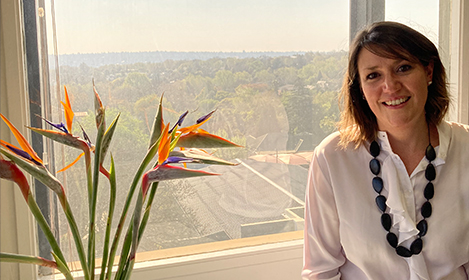
Angela Curzon joined Co-Arc International in 2015 to head the interior design department. She gained valuable experience working as senior interior designer, founding her own interior design studio, completing a project management qualification at UNISA, and receiving her Green Star certification for interiors through the GBCSA.
For Angela, interior design is a means to transform the lives of people who live in and enjoy a certain space; to improve their quality of life through design. She seeks to understand fully the client’s requirements in order to maximise the design’s potential; practically, functionally and with a good deal of aesthetic flair. Her approach is to provide the client with a set of aesthetically pleasing but efficient solutions to improve the user’s experience and use of space.
Angela oversees the production of interior design projects within Co-Arc, and collaborates with consultants and clients to produce coordinated designs that enhance the clients’ investments.
Her ability to merge the understanding of a client’s needs, the production team’s resources and the consultants’ expertise into a well-executed design is unmatched. This skill combined with the way in which she assists the client throughout the design process, expectations management and efficient implementation makes her invaluable to the Co-Arc team.
We have collaborated with dozens of architectural practices from Cape to Cairo and beyond. The relationships formed out of mutual respect stretch across continents, enabling Co-Arc to add value to projects as far afield as Moscow, Switzerland and Argentina, often as collaborating designers with other talented architects and multi-disciplinary engineers, but also on the strength of our technical expertise and skill as developers of technical documentation or as architects of record. We pride ourselves on our record of always bringing respect for our peers, our full cooperation and full commitment of our expertise to any joint venture, resulting in some extraordinary projects and many friendships.
Our collaborative practice extends into professional associations with other firms, locally and across borders, into multi-disciplinary consulting and contracting teams, and into ongoing engagement with our clients. Through collaborative practice and teamwork, as made physically manifest in our studio culture, we add value to a project well beyond the sum of the individual contributions.


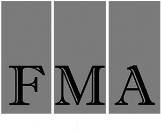


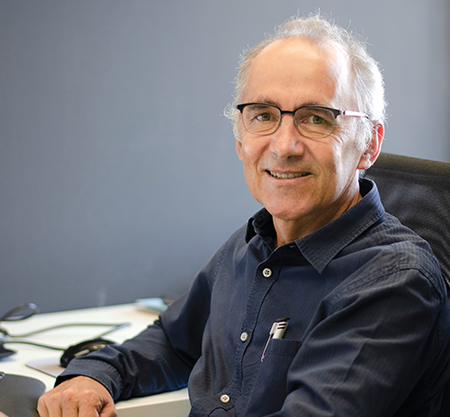
Chris Malan
Chris Malan is a senior director at Co-Arc International Architects with over thirty years professional experience.
As a young architect in training Chris accepted a solitary year-long posting to Botshabelo township outside Bloemfontein, an experience which both challenged and informed his understanding of the role of an architect in Africa. Seeking a broader perspective, he embarked on a gap year in Europe from which he returned at the end of 1989, when global political shifts heralded political change at home. He joined Meyer Pienaar Architects in Johannesburg and was appointed an associate in the firm four years later. In this role he immersed himself in developmental challenges of the country, and helped navigate Meyer Pienaar through a period of transition, which culminated in 2005 with the establishment of Co-Arc International, of which he is a founding director.
Chris has made award-winning contributions to architecture and to urban design in the current South African context and has worked as project architect across the African continent. He involves himself actively in all stages of design and on-site realization of projects at all scales, be they small developmental projects, major civic and corporate buildings, or strategic urban design frameworks. He has served on the habitat portfolio of the SA Institute of Architects, assisted academically as thesis examiner, competition adjudicator and guest lecturer, and co-authored and published two architectural monographs.
Chris thrives on the exploration of strategic solutions to complex contextual challenges, seeking to transform existing environments for the better by working with their inherent potential. Much of his work entails the redevelopment of urban precincts, brownfield sites or buildings in need of repurposing for a more sustainable future. Professionally grounded by separate degrees in architecture and in environmental management, he approaches projects with a sense of responsibility towards the shaping and the nurturing of our living environments: our cities as habitats supportive of human welfare within healthy societies, sustainably embedded within the natural ecosystems and resource-base of our planet.
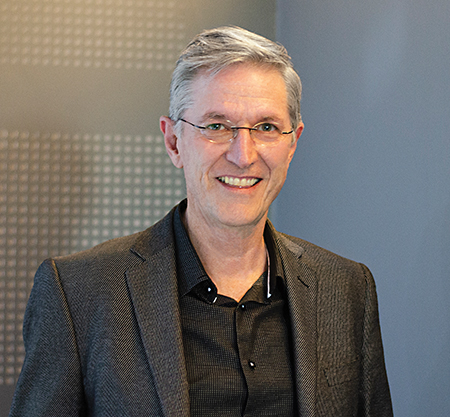
Patrick McInerney
Patrick McInerney is CEO and lead designer at Co-Arc International. With a background in retail and commercial architecture, a master’s degree in urban design and considerable experience in commercial, cultural, mixed-use and housing projects, Patrick’s passion for architecture is fed by an understanding of its impact on individuals and society.
As a senior partner of Co-Arc International Architects, he has gained more than 40 years’ experience as he collaborated in a leadership capacity on various projects throughout Africa including, Ghana, Morocco, Mauritius, Mozambique, Botswana and South Africa. He has won various awards, and received the South African Institute of Architects’s Merit award for the Edenvale Public Library and Mpumalanga Government Complex. The diversity of projects has afforded him greater understanding of the impact of architecture on different cultures, clients and professional teams.
As an expert in the field, he has served as an external examiner and visiting lecturer at the University of the Free State and the University of the Witwatersrand and, has made numerous contributions to books and magazines. Patrick has co-authored, edited and published two architectural monographs of important post-apartheid buildings in South Africa.
He sees each project as a unique opportunity to find the visionary in each client. To him, the client is key. Patrick is acutely aware of the trust placed in the architect and the responsibility he has toward the client in delivering a sound financial investment. He is motivated by a belief that architecture does in fact have a psychological and physiological impact on the lives of the inhabitants, and he is specifically interested in the way his decisions affect people; how they feel and act. Crucial to him is an appropriate response to community and nature, which adds value to clients and society.
Patrick knows that architecture is a creative pursuit, where insight into the client’s stated and unstated needs can create a profitable investment for the client, and a valuable addition to the city.
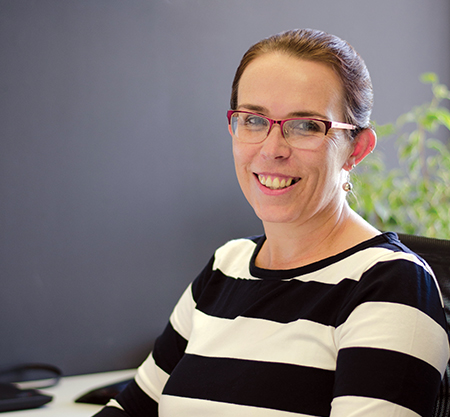
Catharine Atkins
Catharine Atkins has collaborated on various professional teams to build a long list of successful projects in South Africa, Ghana and Nigeria and further afield. This valuable experience gained over the course of her career, with a passionately technical orientation, has led her to oversee a diverse production team tasked with delivering the tallest building in Africa.
The Leonardo tower tested every aspect of her technical and coordinating abilities; and increased her passion for collaboration with a full design team, aimed at delivering a complete and functional design.
Catharine has completed various high-rise offices, hotels,and retail and mixed-use projects in the development hub of Sandton during her time at Co-Arc International. Her expertise in the delivery of complicated projects across the continent of Africa is unrivaled.
Her role as a project leader in the office extends to the role of production leader and mentor in the office. Not only does Catharine manage to co-ordinate the complexity of the structure and systems of the fast-tracked Leonardo tower; she also makes time to develop the technical skills of young architects.
For Catharine, architecture is about “getting the design in my head and understanding the product we will deliver”. To her the building must be a ‘working machine’ that is fully resolved technically and in all aspects, a complete product. Her capacity to visualise the end-product is a key attribute that allows her to bring together the various disciplines of a professional team and lead them to the completion date of every project she undertakes.
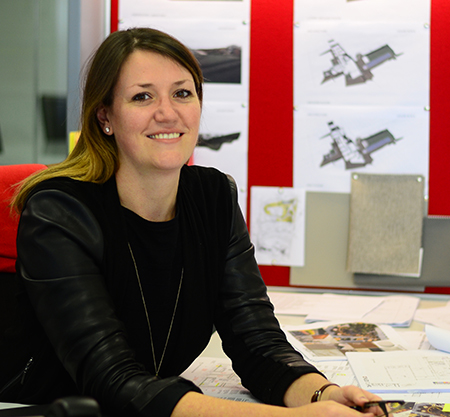
Angela Curzon
Angela is the head of our interior design department at Co-Arc International Architects. She is skilled at managing the intricacies of various projects. Angela became an associate at Co-Arc International Architects in 2021. She oversees the production and management of all interior design projects as well as collaborates with consultants and clients to produce well-coordinated designs that enhance the clients’ investments.
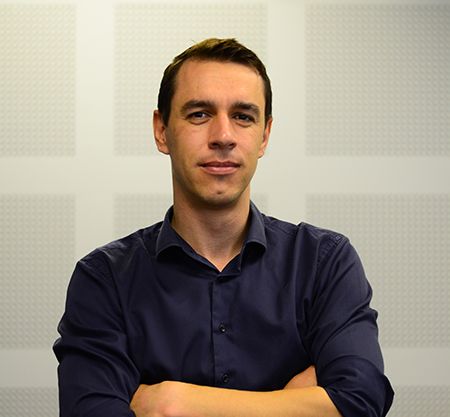
Gustav de Necker
Gustav joined Co-Arc in 2017 as a Candidate Architect and got straight into the crux of work by running large scale projects in Botswana, Mpumalanga, Ghana and Johannesburg. He obtained his Bachelor’s Degree in Architecture from the University of Cape Town as well as graduating with a Bachelor’s Degree in Film and Media Productions. He then went on to obtain his Honours and Master’s in Architecture from the University of the Witwatersrand.
Gustav firmly believes in the importance of holistic, context driven designs in cities. He maintains that in order for efficient and working cities to be produced, architecture should focus on the whole in order to provide for the individual. His interest in efficiency of work and design allows him to focus on the important aspects of clients’ requirements and to satisfy their needs in the most professional and effective manner.
Gustav became an associate at Co-Arc International Architects in 2021 and has an abundance of experience in every aspect of the architectural process. He is always consistently learning from fellow colleagues in the office and has grown into a well-rounded architect, who becomes an integral member of any team or project that he works on.
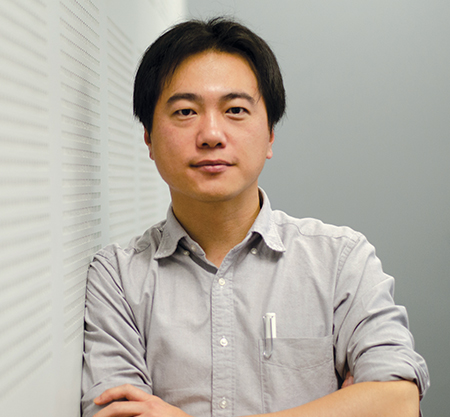
Yu-wei Fan
Yu-Wei (Andy) Fan applies a rigorous and intellectual approach to the design of a project, and a thorough analysis and interpretation of the client’s needs allows him to arrive at functional and flexible building and spatial designs that enhance the value of the final product.
He became an associate at Co-Arc International Architects in 2019, after gaining experience on a wide range of key projects throughout Africa such as in Kenya, Ghana, Botswana and South Africa. Since joining in 2009, his pragmatic and diligent manner has enabled him to collaborate in an increasingly senior role within Co-Arc, to the point where he is now project coordinator on various large-scale developments.
Andy finds it important to develop concepts into detailed designs and 3D visualisations to assist the client’s understanding of a design. He prides himself in developing good working relationships with clients and consultants and has found that this helps him to lead large interdisciplinary teams whilst maintaining the architectural vision of the project.
He has also gained considerable experience whilst working on urban design projects that Co-Arc has collaborated on. He is particularly interested in the spaces between buildings, and the way in which these spaces are designed for pedestrians. The pedestrian, he feels, is the most important consideration whilst designing the urban fabric of any city. He also feels that there can never be enough green space worked into an urban design scheme.
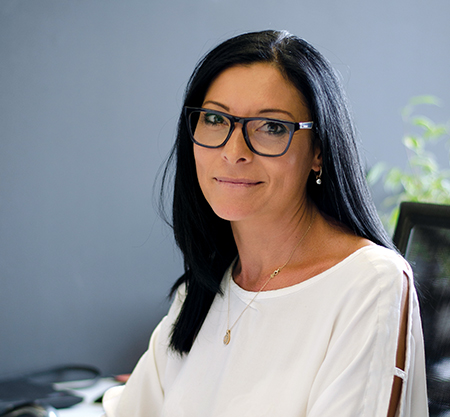
Jackie Breytenbach
Jackie Breytenbach joined Co-Arc international in 2013, in a financial reporting and bookkeeping capacity. She gained her experience in the financial sector around Gauteng and Mpumalanga, working for various companies as financial manager, earning promotions and the respect of colleagues and clients alike.
Brought in as a financial manager and understudy for retiring partner Ben du Plessis, she soon became integral to the financial administration of the practice and was appointed as associate to the firm in 2019.
Jackie arrived at Co-Arc in search of a new challenge but with one condition: that ethics and empathy are a non-negotiable part of the company’s culture. At Co-Arc International, she found a business that combined finance and empathy and discovered the passionate search for excellence prevalent in the practice. She is proud of Co-Arc’s history and the weight of its legacy, and she has been vindicated in her position and has never had to compromise. Co-Arc’s success is intertwined with Jackie’s financial administration and guidance.
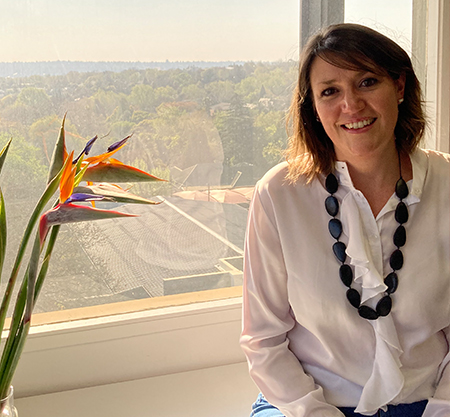
Angela Curzon
Angela Curzon joined Co-Arc International in 2015 to head the interior design department. She gained valuable experience working as senior interior designer, founding her own interior design studio, completing a project management qualification at UNISA, and receiving her Green Star certification for interiors through the GBCSA.
For Angela, interior design is a means to transform the lives of people who live in and enjoy a certain space; to improve their quality of life through design. She seeks to understand fully the client’s requirements in order to maximise the design’s potential; practically, functionally and with a good deal of aesthetic flair. Her approach is to provide the client with a set of aesthetically pleasing but efficient solutions to improve the user’s experience and use of space.
Angela oversees the production of interior design projects within Co-Arc, and collaborates with consultants and clients to produce coordinated designs that enhance the clients’ investments.
Her ability to merge the understanding of a client’s needs, the production team’s resources and the consultants’ expertise into a well-executed design is unmatched. This skill combined with the way in which she assists the client throughout the design process, expectations management and efficient implementation makes her invaluable to the Co-Arc team.

AZIZ TAYOB ARCHITECTS
MPUMALANGA RSA
Based on longstanding friendships and mutual respect, the relationship between Co-Arc International and Aziz Tayob Architects began in the early 1970s when the founding partners of the two practices worked for Meyer Pienaar. The professional relationship was re-established when working on an unbuilt housing project in Burgersdorp and was followed by various projects initiated by both entities, culminating in the Mpumalanga Legislature and Administration Offices. The collaboration between the two offices has resulted in numerous completed architectural and urban design projects, including several competition successes and awards of merit.

CONSULTIUM
JOHANNESBURG
Co-Arc International and Consultium were jointly awarded the commission for the Booysens Magistrate’s Court in Johannesburg after tendering separately. Although initially a forced union, and after some trepidation, the two firms slowly formed a strong and committed team, jointly striving to produce a building that would exceed expectations. The success of the project demonstrates the value each party brought to the partnership.
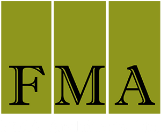
FMA
NIGERIA
Recommended by a client, FMA became architects of record for The Wheatbaker hotel in Nigeria in 2011. Since then, numerous projects in Nigeria in the hotel, leisure and commercial development sector have been tackled jointly for a variety of clients.

ORTHNER ORTHNER & ASSOCIATES
GHANA
Our search for local partners for a hotel project in Ghana was rewarded when we collaborated with Orthner & Orthner and Associates. The success of the project and the mutual respect and trust developed during the design and construction, has led to numerous joint commissions and competition wins in Ghana, including a commission for the World Bank Group Headquarters for West Africa.

PALEDI CO-ARC
BOTSWANA
As the winners of the Mpumalanga Legislature competition and having built an expertise in legislatures, Paledi Morrison invited us to enter a competition for the Botswana Legislature in 1998. Our successful collaboration in that competition resulted in a variety of further projects in South Africa and Botswana. In addition to numerous joint competition entries, urban designs and project proposals, completed and current project realisations include the Oodi Technical College, redevelopment of the Bank of Botswana Headquarters and its logistical facilities, the BMW Supertech showroom in Durban and commercial office and retail developments for the Smart Partnership.
SCHNEPEL ARCHITECTS
NELSPRUIT, RSA
Our search for local partners for a hotel project in Ghana was rewarded when we collaborated with Orthner & Orthner and Associates. The success of the project and the mutual respect and trust developed during the design and construction, has led to numerous joint commissions and competition wins in Ghana, including a commission for the World Bank Group Headquarters for West Africa.
OUR AWARDS
“The exemplary nature of the environmental thinking embodied in the design far exceeded the requirement of 20% savings for the certificate, achieving, 36% Energy Savings, 72% Water Savings and 96% Less Embodied Energy in Materials”
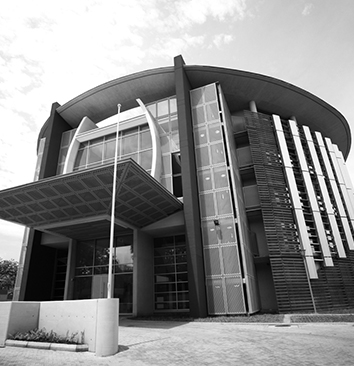
Winning entry in competition for AIMS Mathematical Institute - Saltpond, Ghana Nestled into the rolling coastal plains, the architecture of the mathematics institute in Saltpond Ghana, creates a serene place for contemplation. The building is informed by concepts of being earth bound with infinite horizons, proportion rhythm and scale.
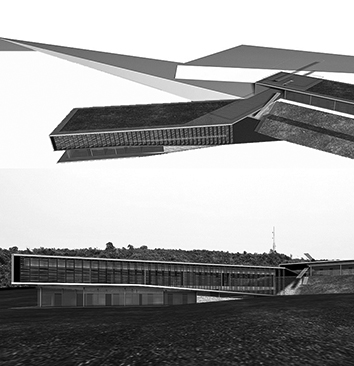
Winning entry in competition for Ghana Institute of Architects Offices and Vanguard Insurance – Accra, Ghana The high rise, mixed use tower for the Ghana institute of Architecture, uses considered articulation of structure and servicing in an environmentally intelligent response to a complex programme to create an iconic identity for the Institute.
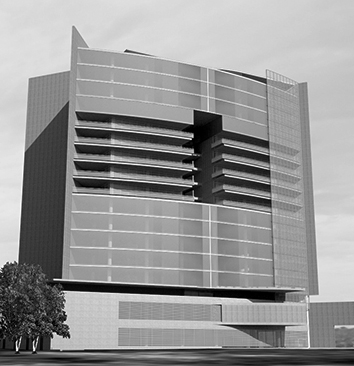
National competition John Moffat Building - University of the Witwatersrand Using the building programme to create a variety of incidental spaces for student staff interaction in galleries, volumes and courts, space for exhibition and display were added to the simple forms that echo the rhythm of Fassler’s original architecture.
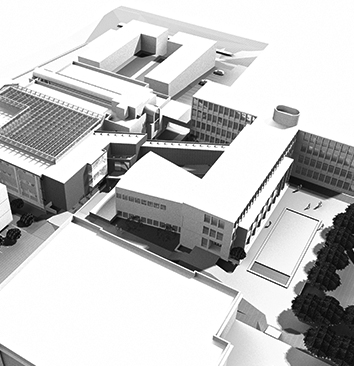
National competition for the Johannesburg City Park Underutilised, derelict and abandoned land and buildings, on the periphery of the CBD of Johannesburg, are knitted together in a vast continuous urban amenity as an attractor for investment. The scheme proposed using the capital of government creatively to stimulate investment, provide inner city housing and grow a greater rates base for further development.
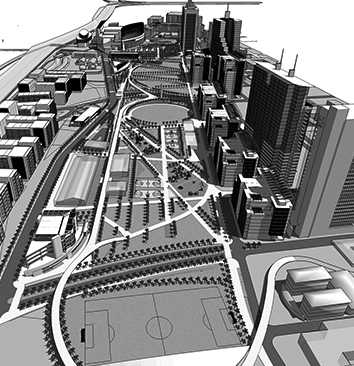
South African Institute of Architects, President’s Award for the Mpumalanga Provincial Government Complex Art Works Programme. “A key contributing element to the architectural richness of the new Mpumalanga Provincial Legislature was a comprehensive artworks programme… An earnest attempt to integrate the influence of local communities, this project needs to be recognized as a contribution to integrate a modern approach with traditional influences.” (Awards SAIA, 2008: 78)

Winning entry in the competition for design of the University of Pretoria Student Housing. The student housing was designed as clusters of eight rooms around a communal cooking and recreational space. The clusters formed modules of buildings that created a village-like townscape in the university precinct.
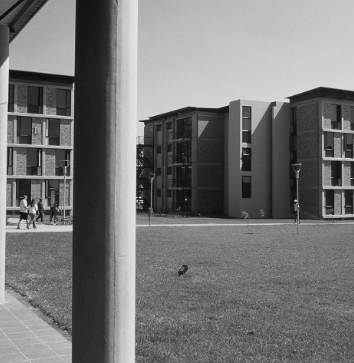
South African Institute of Architects Merit Award for the Ekurhuleni Council Chamber. “In time the new will read as if it had always been there and yet distinguishable from what was old. A cleverly engineered and crafted new steel structure is elegantly and delicately integrated into the design. Technically, from both the structural and servicing point of view, the design is outstanding, and the execution exceptional.” (artefacts.co.za [accessed, 2019/04/18])
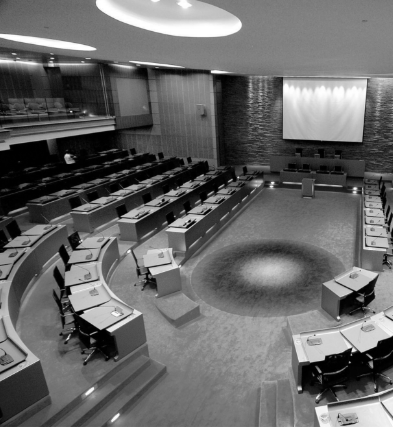
GIFA Award of Merit for the Ekurhuleni Council Chamber. “The project incorporates a new council chamber within the old civic centre, while retaining the library and the clinic of the old complex. Architecturally, the new insertion is not so much a contrast to the old but a counterpoint – the difference being that the former is bold and with an urban presence, the latter a quiet surprise, but creating an integrated whole of the old and new.” (artefacts.co.za [accessed, 2019/04/18])
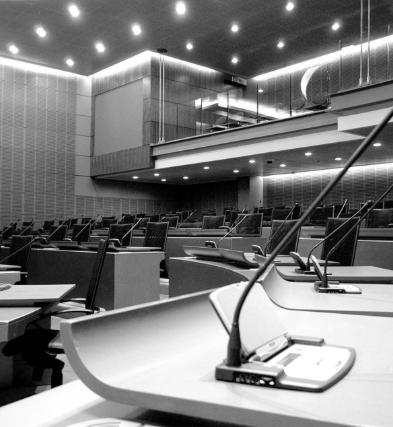
Winning entry in the competition for the design of the new Central Electricity Board Head Office, Mauritius. Playing on the notion of energy, this head office building provided a “holistic environmental response with efficient servicing appropriate finishes and a rational structure leading to an integrated solution to its form.” Patrick McInerney
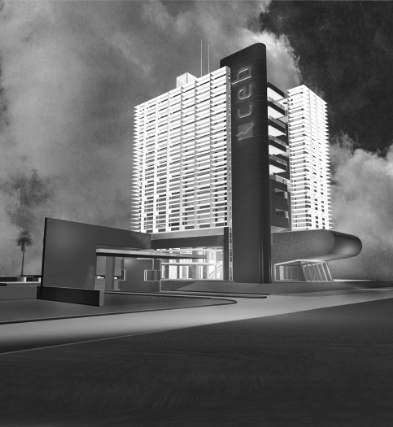
South African Institute of Architects Merit Award for the Mpumalanga Provincial Government Complex. “There is however a consistency of merit in the making of this building. It is well integrated into its site, taking full advantage of a unique landscape, and in turn through the opportunities offered in the design allowing for the extension of the natural into both designed and hard landscaping.” (artefacts.co.za [accessed, 2019/04/18])
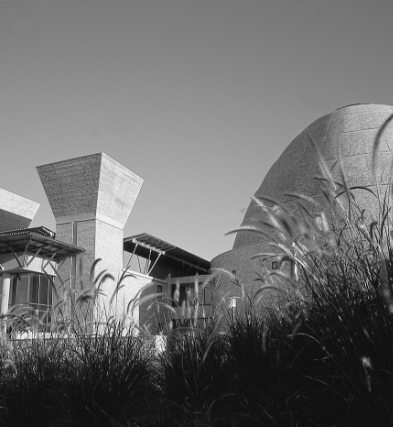
Shortlisted for the SAPOA Award for Innovative Excellence in Property Development for the Mpumalanga Provincial Government Complex. “Anchored by the Mpumalanga Provincial Government Complex … the master planning together with urban design controls and management at Riverside Park have resulted in an attractive yet functional mixed use node that does the capital city of Nelspruit proud and continues to contribute towards Nelspruit’s strong economic growth.” (Property Developer, 2014: 29)
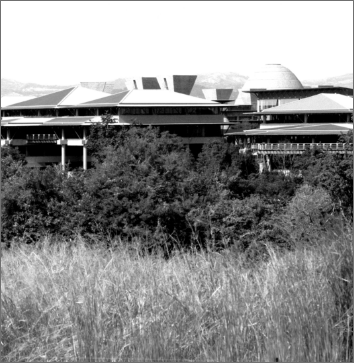
Local competition for the University of Johannesburg Theatre and Gallery Tucked into the landscape with its few vertical elements, marking a new entrance to the University of Johannesburg, the large programme is hidden in a complex interplay of public access, gallery dance studios and theatre, which create a variety of ground planes for student engagement.

International competition for the Mauritius Police Training College - Ebene Mauritius An interesting interplay between the volcanic mountains of central Mauritius results from the careful approach to siting and campus planning which creates village clusters, using simple building forms, to achieve a series of public spaces and routes that encourage interaction and engagement.
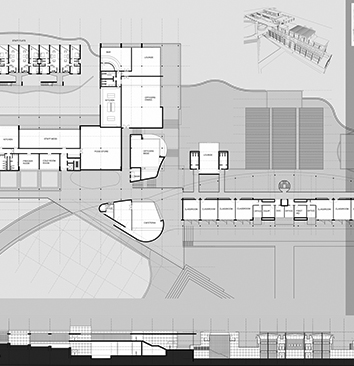
Mpumalanga Institute of Architects Merit Award for the Mpumalanga Provincial Government Complex. “The building is well detailed and inventively crafted. The domed assembly hall is a tour de force, both in terms of structural ingenuity and spatial configuration. The ceiling as a crafted object is spectacular and the chronology tapestry – an addition proposed by the designers - a national treasure. (artefacts.co.za, accessed [2019/04/18])
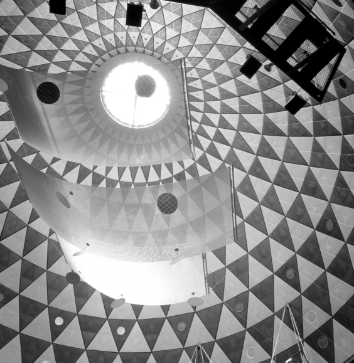
Mpumalanga Provincial Government Complex shortlisted for a World Architecture Award. “A holistic approach was adopted to achieve a human scale for this huge complex. The shape of the land was used to reduce the impact of the buildings on the environment.” (Planning, Planning, 2001: 48)
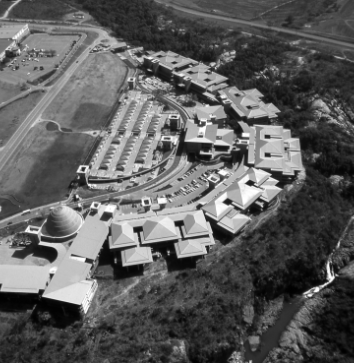
Finalist Nedbank/Mail & Guardian 2000 Green Trust Awards for the Integrated Urban Design Framework for Marabastad. “The study, rich in historic and legislative background, and in the outcome of community participation, contributes too in bringing back an African quality to the city street and neighbourhood.” (South African Architect, 1999:29)
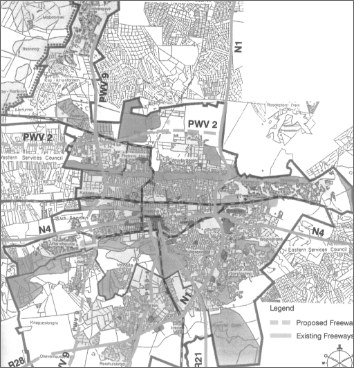
SA Architect Project Award for outstanding achievement for the Integrated Urban Design Framework for Marabastad. “This is an outstanding product, having all the qualities which distinguish an award winning entry… [and] is in many ways a seminal work in healing this country’s cities.” (South African Architect, 1999:29)

Winning entry in the competition for design of the new Parliamentary Offices for the Republic of Botswana, Gaborone. The competition was called by the government of Botswana. In its clarity of purpose within the pre-existing urban context, the design was influenced by the ideas of Louis Khan and aimed at restructuring and strengthening the government precinct within the city by providing a logical termination of the axis that runs through the old mall.
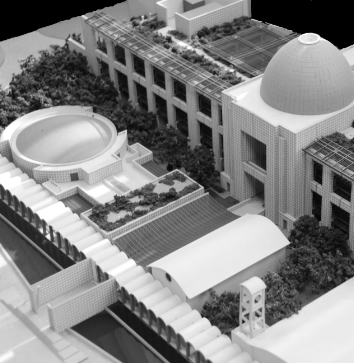
Winning entry in an invited competition for the Coalfields Medical Aid Society offices.
Winning entry in the competition for design of the Mpumalanga Government Complex. “Representing the architecture of a new democratic structure in a modern technologically advanced manner yet representing the spirit of the African people who have resided here for over 1500 years.” (Planning, 2001: 46)
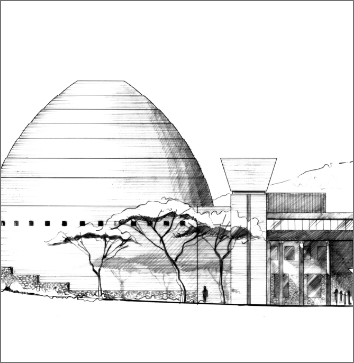
South African Institute of Architects Merit Award for Sandton Square Urban Design. “In a city where there are few usable public spaces where people can explore civic pleasures and responsibilities, Sandton square has provided a beginning. Hopefully this is just the start of a trend to re-establish the city as a forum for the development of public culture.” (SA Architect, 1998:46)
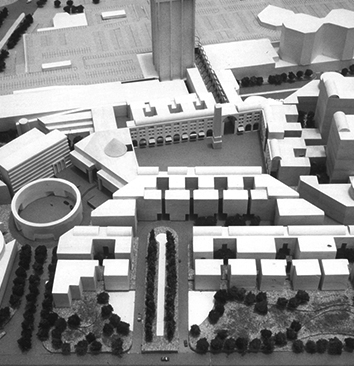
South African Institute of Architects Merit Award for the Edenvale Library. “In retrospect the building evolved successfully, being aesthetically of the best and an important acquisition for the community. It is without doubt the finest building in the town and the staff believe that it is one of the, if not the, finest public libraries in the country.” Stella Wilkins – Edenvale Library chief librarian
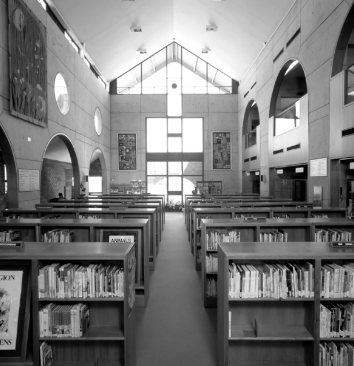
South African Institute of Architects Merit Award for the Sandton Library. “The choice of building of this nature as a library is unusual … [but] the design … has come about by applying the constraints of the site to the criteria needed for a good library and public facility.” (Planning, 1994: 47)

Institute of Steel Construction Award for the Sandton Library. “The building emanates a unique sense of place and has a potential to become the unconfoundable symbol of its locality. A clear example of architecture mediating between the world as we find it and the world as we wish it to be.” (artefacts.co.za [accessed, 2019/04/18])
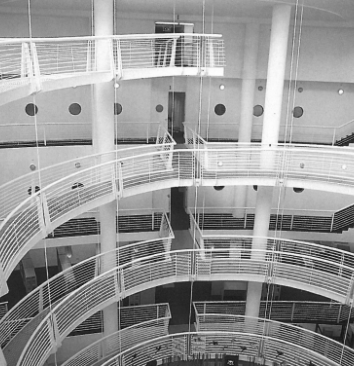
International Award of Merit for Urban Design-Excellence bestowed by the International Downtown Association, USA, for the Alberton Boulevard Project. “Here we created an urban revolution by closing the main traffic route through Alberton, in order to remove the heavy traffic that was polluting the area. It was almost open heart surgery for the city, as we created a large bypass for the traffic, and pedestrianised streets on a large scale.” François Pienaar
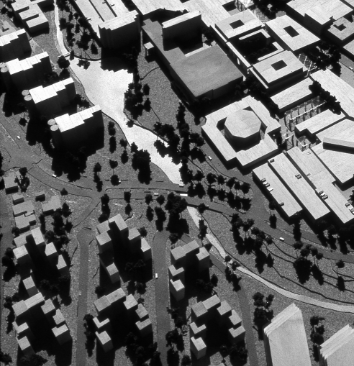
South African Institute of Architects Merit Award for the Standard Bank Centre Gallery. “Recently the conversion of the former Commercial Exchange building on the corner of Simmonds and Frederick Streets in the city, was completed, to provide the Standard Bank with premises for its archives, exhibition space, an art gallery and facilities for music recitals.” (Planning, 1990: 34)
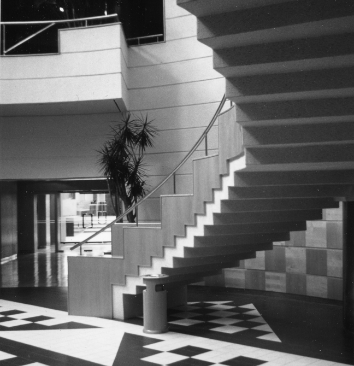
South African Institute of Architects Merit Award for the Johannesburg Technical College. “The design hinged upon the urban context of the college, where we removed various buildings to create a green band, that became the spine of this internally focused scheme.” François Pienaar
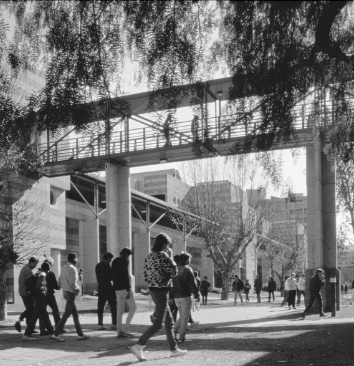
South African Institute of Architects Conservation Award for renovation to the Johannesburg Art Gallery by Sir Edwin Lutyens. The wings of the Johannesburg Art Gallery “accept that [historical] footprint uncompromisingly but reinterpret it … and they allow it to be more clearly understood in its historical context and at the same time are themselves [the wings] rendered more comprehensible.” (Architecture SA, 1987: 40)
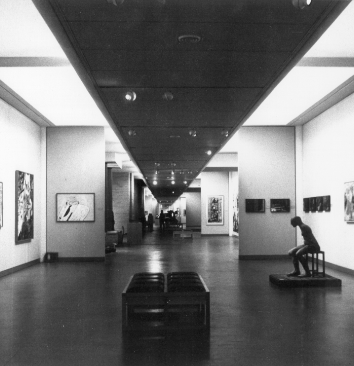
Invited by the American Institute of Architects to submit work to an international exhibition in the USA. “We were invited to submit work for a Retrospective Exhibition for Louis Khan, specifically from the old scholars of the master’s degree class that studied under him. We sent the model of the Johannesburg Art Gallery that had just been completed and Willie Meyer and I went to the exhibition in the USA.” François Pienaar
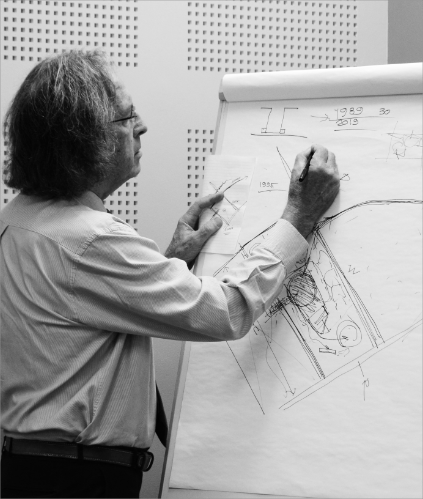
Winning entry in an invited competition for the design of the New Library for Edenvale. “Public response has been overwhelming … The main aim, to create a ‘home from home’, has been fully realised.” (Construction, 1994: 31)
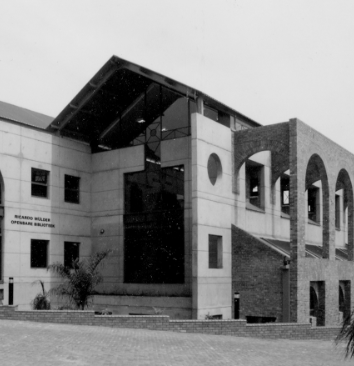
“The Durban City Council recently announced the winner of its national architectural competition for the design of the city’s new cultural complex … These winners were selected from seven runners which included … Meyer Pienaar Smith Moren Inc, Johannesburg.” (Planning, 1989: 23)
South African Institute of Architects Merit Award for the Johannesburg Art Gallery. “In summary, the lesson of the building is in its most successful part – the wings. They accept that footprint unsurprisingly but reinterpret it so that the historical structure remains, but … new spatial possibilities construct forms which allow a perceptual dialogue with the original.” (Architecture SA, 1987: 40)
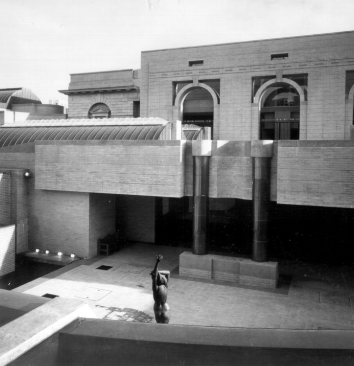
South African Institute of Architects Merit Award for the Vaal Triangle Technikon Library. The campus masterplan, laid out as a grid, forms a holding structure made of multi-levelled circulation routes into which the individual faculties were inserted. Within the resultant interplay of open and closed spaces for student interaction, the new library acts as a major focal point.

International Competition for Design of Hong Kong University of Science & Technology (in association with PSI and Rocco Yim Architects) - one of three finalists. “This international competition had more than 300 entrants and Meyer Pienaar was happy to learn that we ended up as finalists among so many. Politics may have played a role in not winning the competition outright, but to have been considered was an honour in itself.” François Pienaar
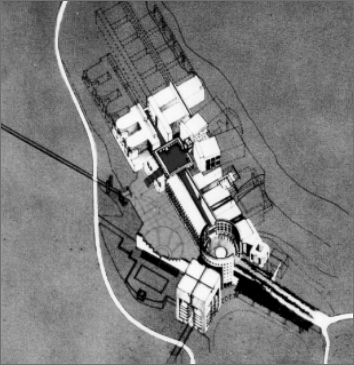
Crystal Awards Merit Award for design achievement. “Two projects supported the citation nominating architects François Pienaar, Floris Smith and Willie Meyer of Meyer Pienaar and Partners Inc. One was the Johannesburg Art Gallery and the other the Krugersdorp Civic Centre.” (Planning, 1987: 68)
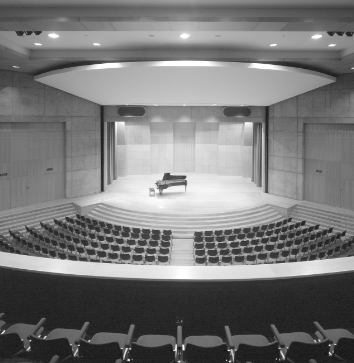
South African Institute of Architects Merit Award for House Meyer. “After returning from his travels to Iran in the mid 1970s, Willie Meyer designed his own house based on the courtyard lifestyle that he saw there. The materials used, such as the bricks and the patina, are all reminiscent of Iran.” François Pienaar
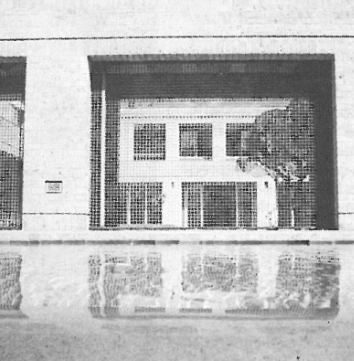
South African Institute of Architects Merit Award for the Everard Read Gallery. “The Meyer-Pienaar collaboration produced an outstanding example of post-modern architecture which has led to the Everard Gallery becoming a much admired landmark in Rosebank, described by the gallery owners as having cosmopolitan and energetic qualities that this fantastic city has to offer.” Andrew David Harrison
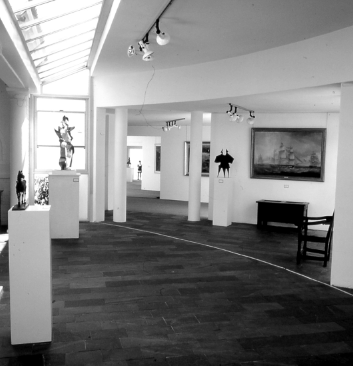
South African Institute of Architects Merit Award for the Student Centre, Potchefstroom University. “The centre has created successful nucleus for meetings and social gatherings. This was achieved by very good pedestrian connections with the rest of the campus.” (Architecture SA, 1981: 2)
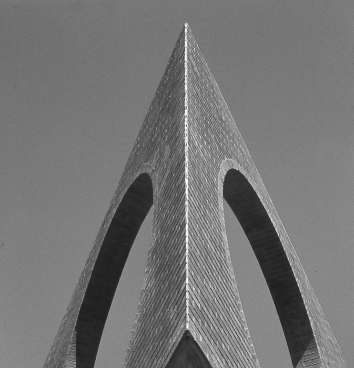
South African Institute of Architects Merit Award for Government Buildings, Mmabatho. “Die opdrag het gevra vir oop kantoorbeplanning omdat dit, onder andere, buigsaamheid in die verskuiwing van departement vergemaklik. … daar is gepoog om menslike skaal en ‘n gevoel van identiteit aan die uitlegte te gee.” (Architecture SA, 1979:47)
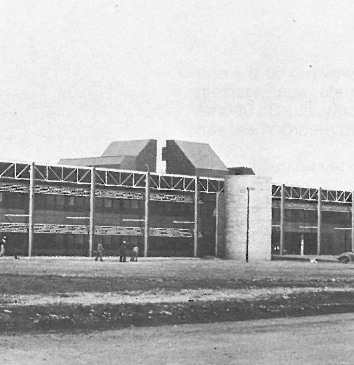
South African Institute of Architects Merit Award for the Hazyview Church Competition. “Die doelwit gestel is om te poog om ‘n kerkgeboukompleks te skep wat deur sy fisiese gestalte die kerkganger tot ‘n verhewe bewustheid sal stimuleer.” (Architecture SA, 1979: 49).
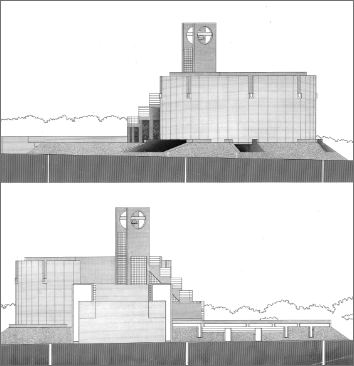
Prize as one of three winners out of 601 entrants from 80 countries in the international competition for the Pahlavi National Library, Tehran, Iran. “The Pahlavi Library was designed to be sensitive to the climate and its surrounding context. It also had a deep level of historicity in terms of materials and form that allowed it to create various interesting spaces, such as the large domes in the building.” François Pienaar

South African Institute of Architects Merit Award for the Rand Afrikaans University. “What standards would we have achieved without the urge to explore nature, to analyse our environment, to improve given conditions and to make progress… It is a basic human activity to explore, it is a necessity to teach and by doing so transmit the findings and knowledge gained in the past – for a better future.” (Planning, 1973: 31)
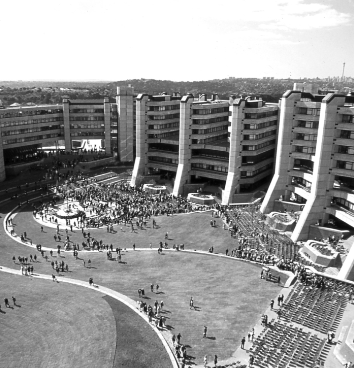
South African Institute of Architects Merit Award for the Potchefstroom University Sports Building. “This project was completed in partnership with Bannie Britz, because the Meyer Pienaar office was extremely busy with the Rand Afrikaans University at the time and needed some help to be able to work on the Potchefstroom University buildings.” François Pienaar
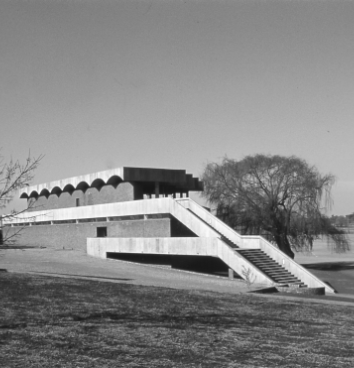
South African Institute of Architects Merit Award for Sanlam Housing. “The overall plan tried to find a layout which would give variety of spatial experiences but at the same time create a central ‘activity zone’ which everybody has to get involved with and thereby identify himself with the place he is living in.” (Planning, 1975: 29)
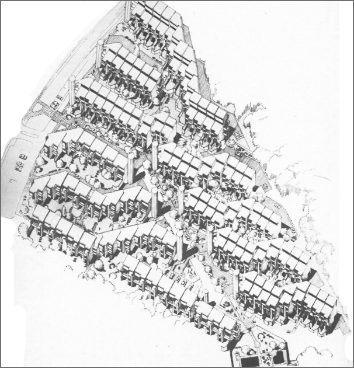
First prize in an international competition for the Germiston Civic Centre. “Professor Alwyn Burger from the University of Pretoria was the main adjudicator for this important international competition. We worked with Gerhard Hattingh and Silvio Bufler on this project and it was influenced by the designs of Alvar Alto.” François Pienaar
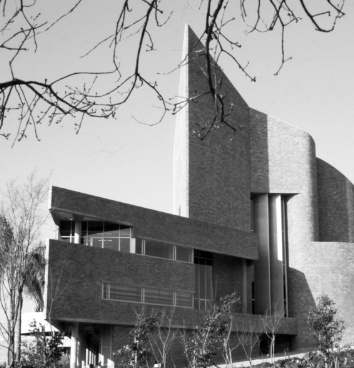
South African Institute of Architects Merit Award for the Rand Afrikaans University Student Housing . “The Transvaal Provincial Institute of Architects made awards to the following buildings as being of exceptional merit: The Rand Afrikaans University Student House… .” (Architect and Builder, 1973: 30)
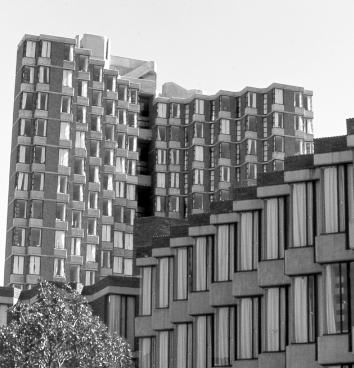
South African Institute of Architects Merit Award for House Robinson. “This was one of the first projects on which Willie Meyer and Glen Gallagher collaborated, and it was interesting because it was positioned right at the top of Linksfield Ridge. The design was inspired by Louis Khan and the property contained a stone wall built by Ghandi.” François Pienaar
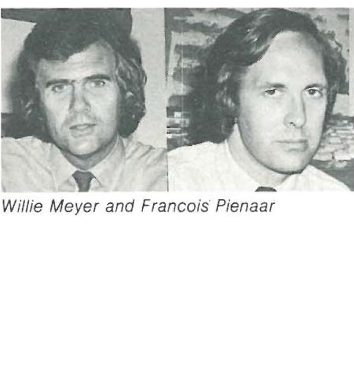
As one of the foremost Architectural firms in Johannesburg, the ethos of Co-Arc International stems from an appreciation of a rapidly changing world, in which corporate governance needs to pursue value creation in a sustainable manner. The value proposition which directs our architectural work also underpins our corporate culture: an awareness of our duty of care in the triple context of the economy, society and the environment. We have applied this level of thinking, throughout our work as Architects in Johannesburg and in Sandton specifically. Many of these values can be seen in our approach to new buildings in Gauteng, but also in large scale refurbishments that we have completed Internationally.
It is against this background, that Co-Arc is acutely aware that the architectural profession has failed to transform to reflect South Africa’s cultural diversity and to contribute positively to its full potential to change in its own country. Therefore, in our pursuit to be seen as some of the best architects in South Africa, we constantly evaluate the contribution our projects make to their context locally, but also culturally. Wherever we work, we take particular care to not only keep in mind the resources available to the local area, but that each one of our projects is an opportunity to contribute positively to the people that live there and to build up a neighbourhood or city. Co-Arc looks to move forward with the people of this nation as South Africa moves ahead.
Non-profit organisations that have benefited from our Corporate Social Investment include the Alexandra Health Centre and University Clinic, Johannesburg, the National Organisation of the Blind in South Africa (NOBSA) for proposed developments of support centres in De Deur and in Soweto, and the Mthimkhulu Centre for Disabled Children in Soweto.
Beyond the formal regulatory framework for Af firmative Action, we are also strongly focussed on the potential for transformative impact of the architecture and urban design emanating from our studio.
Our focus on ecological sustainability and social responsibility of development is supported by postgraduate qualifications in Urban Design and in Environmental Management among our senior professionals, accreditations as Green Building Professionals with the GBCSA, and, in addition to statutorily
In response to the imperatives to achieve social transformation in South Africa, Co-Arc has at its inception adopted an empowerment policy which seeks to position the company as an agent of transformation. As South Africa’s legislation and guidelines for Broad-based Black Economic Empowerment (BBBEE) evolved, Co- Arc has aligned its policies to the regulatory framework, ensuring at all times that the underlying ethos remained the real motivating force.
AT PRESENT CO-ARC IS A LEVEL 2 BBBEE CONTRIBUTOR.
This rating was achieved on the basis of audited assessment against the latest Construction Sector Code scorecard.





Non-profit organisations that have benefited from our Corporate Social Investment include the Alexandra Health Centre and University Clinic, Johannesburg, the National Organisation of the Blind in South Africa (NOBSA) for proposed developments of support centres in De Deur and in Soweto, and the Mthimkhulu Centre for Disabled Children in Soweto.
Beyond the formal regulatory framework for Af firmative Action, we are also strongly focussed on the potential for transformative impact of the architecture and urban design emanating from our studio.
Our focus on ecological sustainability and social responsibility of development is supported by postgraduate qualifications in Urban Design and in Environmental Management among our senior professionals, accreditations as Green Building Professionals with the GBCSA, and, in addition to statutorily
In response to the imperatives to achieve social transformation in South Africa, Co-Arc has at its inception adopted an empowerment policy which seeks to position the company as an agent of transformation. As South Africa’s legislation and guidelines for Broad-based Black Economic Empowerment (BBBEE) evolved, Co- Arc has aligned its policies to the regulatory framework, ensuring at all times that the underlying ethos remained the real motivating force.
AT PRESENT CO-ARC IS A LEVEL 2 BBBEE CONTRIBUTOR.
This rating was achieved on the basis of audited assessment against the latest Construction Sector Code scorecard.




